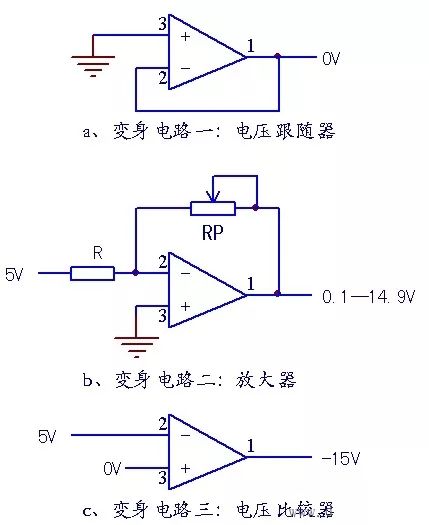An article on the Internet that reads about integrator circuits and how to understand capacitance is quite good. It can be used as a method to qualitatively study integrator circuits and reproduced for reference.
By replacing the feedback resistor in the inverting amplifier with a capacitor, it becomes an integrating amplifier circuit as shown in Figure 1. For the resistance, it looks like something more real, the circuit output state can be clear, replaced by a capacitor, due to the uncertainty of charge and discharge, the capacitor is a more "virtual" object, the circuit output state, it is not easy to ponder.

Fig.1 Structure of an integrating circuit and signal waveform diagram
To understand its output state, we must first understand the spleen of the capacitor. The basic function of the capacitor is charging and discharging. It is an energy storage device. Sensitive to changing voltages (reactions strongly), dull to DC (even indifferent), there are AC DC blocking characteristics. For people who are looking at the world for resistance, it is also possible to think of the capacitance as a variable resistance, so that the mystery of the output of the integrating circuit can be solved.
According to the law of conservation of energy, energy cannot be produced for no reason, nor can it disappear for no reason, and the theorem that the voltage across the capacitor cannot be mutated is derived. At the instant of charging, no charge is accumulated between the two plates of the capacitor, so the voltage at both ends can be maintained at the original state of zero. However, at this moment, the charging current is the maximum, which can be equivalent to a very small resistance or even a wire, if the capacitor charging instantaneously Is a short circuit, it is not a bad idea, such as inverter main circuit, the circuit capacitor to limit the flow of charging measures, it is this reason; capacitor charging, over time, the charging voltage is gradually increased, while the charging current is gradually reduced It can also be considered that the equivalent resistance of the capacitor changes from the minimum to the maximum. After the capacitor is fully charged, the voltage at both ends is the highest, but the charging current is basically zero. At this time, the capacitor is equivalent to the maximum resistance. For DC, Can even be equivalent to open circuit, infinite resistance.
To sum up, in the process of capacitor charging, there are three states that are equivalent to a minimum resistance or a wire, equivalent to a small increase in resistance, equivalent to a maximum resistance, or open circuit. It is this change characteristic of the capacitor that can turn the integral amplifier circuit into three kinds of identities as shown in FIG.

Figure 2 "Three transformations" during the integration circuit work
See Figure II.
1, the voltage follower. At the time t0 (forward jump) of the input signal, the charging current of the capacitor is the largest, and the equivalent resistance is the smallest (or considered as a wire). This circuit is instantly transformed into a voltage follower circuit. The output of the circuit is known as the virtual ground characteristic. 0V.
2, inverting amplifier. During the flat top after the time t0 of the input signal, the capacitor is in a relatively gradual charging process, and its equivalent RP experiences three stages of less than R, equal to R, and greater than R, and thus under the effect of the amplification characteristics in the amplification process, In fact, it experienced three small processes such as inverse attenuation, inversion, and inversion amplification. Whether it is attenuation, inversion or inversion amplification, it means that at this stage, the integrator actually acts as a linear amplifier.
3. During the second half of the input signal flat term, the charging process of the capacitor has ended, the charging current is zero, the capacitor is equivalent to the open circuit, and the integrating amplifier is amplified from the closed loop to the open-loop comparison state, and the circuit is then transformed into a voltage comparator. The output value at this time is the negative power supply value.
It is said that people will turn face, in fact, the circuit can also be transformed ah. Under the capacitive control, the amplifier instantly changes the three identities. Seeing through these three identities of the integrating amplifier, the "real body" of the integrating amplifier has no shape. The amplifier is actually playing in the circle of "enlarging the details and not deteriorating." This will allow me to wait until later.
APM ac dc variable power supply is high-performance and high-efficiency lab power supply with RS232C, RS485, USB,LAN, GPIB(optional) interface based on SCPI protocol .
Combination of full features of market , AC Power Supply provides versatile solutions for your design and test requirement in the industrial fields, R&D institute center and education field.
It also provides built-in standard automobile electrical testing curves,users can select any built-in curve to do the DUT performance test directly according to their demand.
Some features of the DC Power Supply as below:
- Ultrafast respond time
- Accurate voltage and current measurement capability
- Constant Power and wide range of voltage and current output
- Equips with LIST waveform editing function
- Master/Slave parallel and series operation mode for up to 10 units
- Full protection: OVP/OCP/OPP/OTP/SCP
- Voltage drop compensation by remote sense line.
- Have obtained CE,UL,CSA,FCC.ROHS
150V DC Power Supply,Laboratory DC Power Supply,Dc Power Source,Dual Output Power Supply
APM Technologies Ltd , https://www.apmpowersupply.com